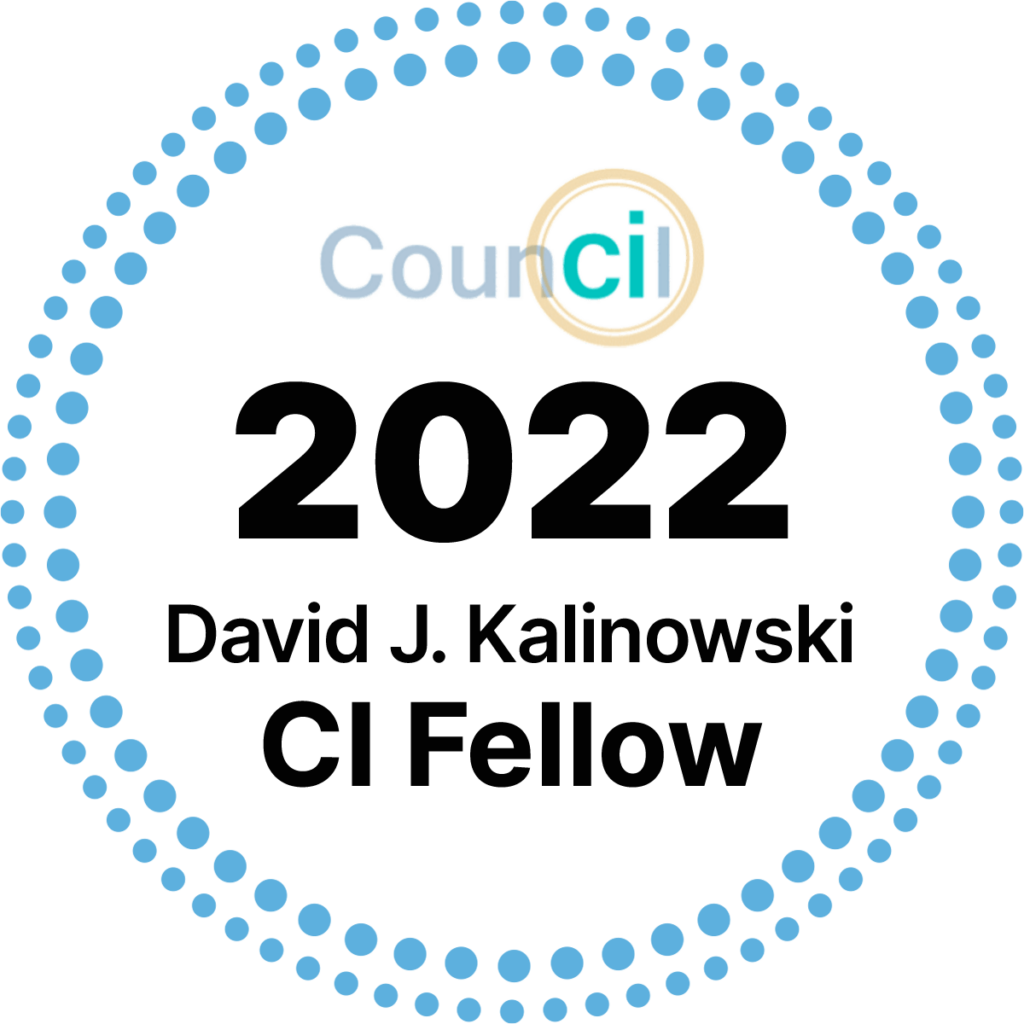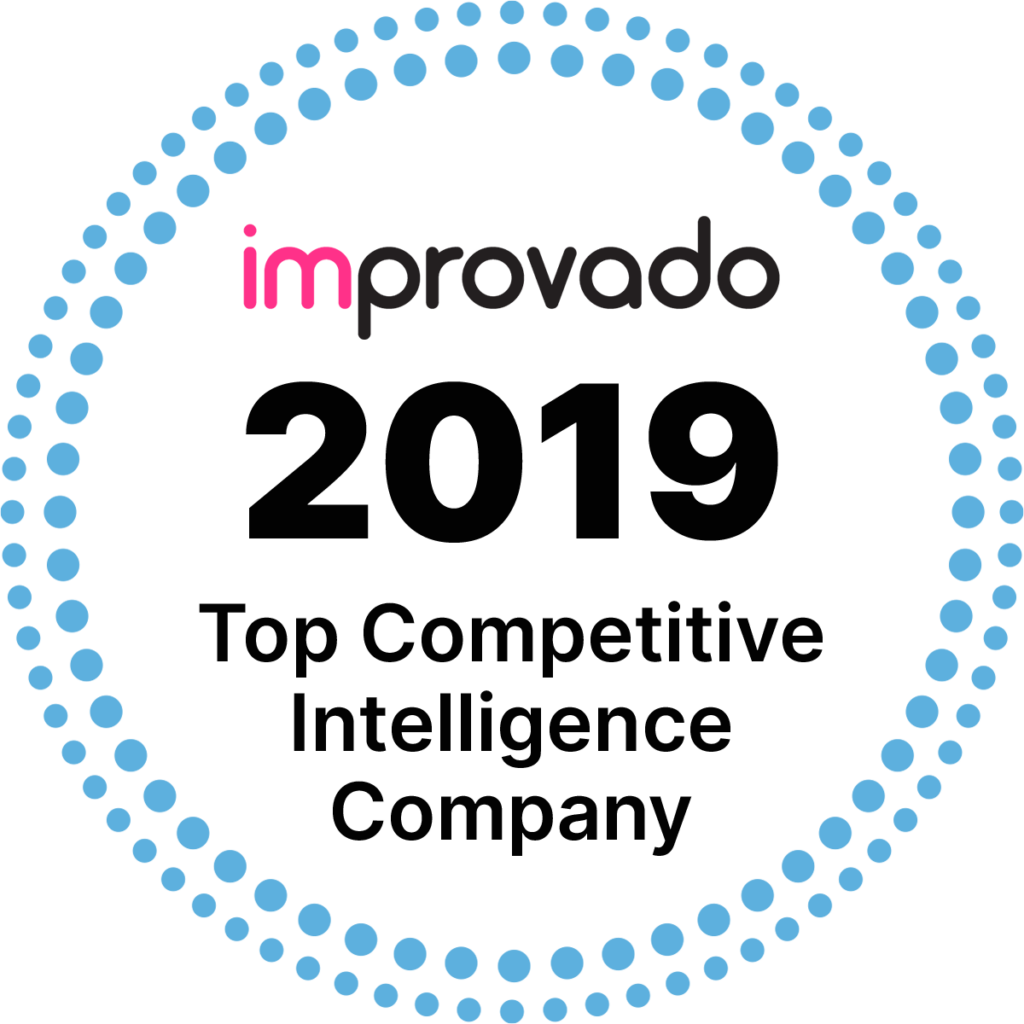Published: July 18, 2019

Let’s cut to the chase — over half of all enterprise strategic plans fail the same year they’re born.
Downstream risks aren’t accounted for, objectives go unmonitored, budgets are misappropriated and accountability is left static. The result is an organization acting as its own worst enemy, unable to execute on business opportunities before and while they strike.
However, you don’t need more apocalyptic reminders aggrandizing what’s risked without agile business strategy execution. Instead, org visionaries need clear, actionable templates that translate business planning concepts to reality — yet can adapt when reality decides to keep you on your toes.
That fluid implementation template starts here, with actionable steps, tools and insights into successful business planning and execution.
The True Objective of Continuous Business Planning
Once institutionalized, continuous business planning enables organizations to quickly and strategically act on business growth opportunities — even ones it didn’t forecast.
True continuous strategic business planning also means all personnel, at all levels, across all departments, are familiar with the strategic business plan. They also know what goals are prioritized, their execution timelines, implementation stages and, most importantly, what they as staff are individually responsible for every day that contributes to that goal becoming tangible change.
Enterprise-wide tools — namely, strategy management or resource planning software — and workflows are available to temperature-check organizational processes continually with goals. Data measures the effectiveness of goal execution. As a result, the entire organization has clear visibility into the business plan as its happening, in-situ, regardless of time or place. Or, put plainly, your organization can now recognize what’s working and what isn’t, then make the appropriate shifts in plan execution — all ensuring you’re not another business whose strategic plan failed before it began.
Strategic Planning Business Models

Successful business plans are often tied to a strategy planning framework. These frameworks are a competitive and preemptive assessment of your organization’s readiness for strategic planning, delivering historical and market data informing your current strategic positions.
Enacting a strategy planning model at your organization delivers data-driven, researched foresight into the internal and external variables affecting the outcomes of your ideal business plan. Reviewing such data ahead of time prevents risky business strategies from being implemented without proper parameters — or launching the wrong strategy altogether.
Your organization can use several business strategy planning frameworks to begin shaping appropriate business plan opportunities.
1. Transformational Business Modeling
Business models are used to document and share the fundamental operations of an organization — its products, services, customer base, finances, revenue streams and more.
However, few organizations leverage the same cohesive documentation to communicate its vision for a business plan. Instead, they rely on ad-hoc departmental meetings and individual leaders to relay core priorities and expectations, without giving staff the resources to help ground that information.
Enter the transformational business modeling strategy. Organizations with an effective transformational business model learn how to create visual tools to communicate a strategic business plan, plus its implementation steps and balanced scorecard methods. This increases business plan buy-in and creates a clear, collaborative and accessible road map for everyone at the organization to follow.
2. Scenario Planning
Scenario planning imagines future circumstances that could jeopardize the fulfillment of your business plans. Organizations can then better prepare for these scenarios, analyzing and comparing best and worst-case trade-offs in costs, resources, employee capacities, profit margins, customer values and much more.
There are intuitive benefits of scenario planning before creating and executing a business plan. Scenario planning is one of the only frameworks that truly creates detailed risk summaries before a plan launches. Organizations that partake in scenario planning preempt many unforeseen challenges and discrepancies in the implementation of their strategic plan, preventing risks from hemorrhaging into fatal wounds.

3. Business War Games
Don’t let the name fool you — wargaming is an approachable and actionable business plan model for organizations across industries to understand their competitive marketplace better and therefore adapt appropriate strategic goals.
Using actual marketplace and competitor data, businesses participate in workshops that identify a competitor’s future endeavors as well as their own responses and countermoves to those endeavors. Ideal wargaming strategies then allow that organization to funnel resources and investments into truly competitive differentiators — differentiators which become the core tenets of their new strategic plan.
Creating an Agile Strategic Business Plan
As the famous Abraham Lincoln quote reminds us, “Give me six hours to chop down a tree, and I will spend the first four sharpening the ax.”
So it goes with creating your agile business plan. After conducting an appropriate business planning model — and reaping the data and insights from its findings — your business is ready to begin outlining its actual business goals and strategies.
Consider these best practices when drafting that strategic plan, as each is an essential preparatory step before plan execution.
1. Know Your Why
Understanding your organization’s driving “why” goes beyond its mission statement. It’s even beyond your list of corporate values, which are often noble and promising but locked in the abstract.
Instead, strategic business planning must be driven by objectives, advantages and outcomes. These are your plan’s true “whys” influencing what ideas you choose to execute. Determine, with detailed granularity, your target objectives, the competitive advantages of those objectives and how you’ll measure their success outcomes. Doing so sets the framework for an actionable and value-adding strategic vision.
2. Compile a Cross-Functional Team
Strategic business plans must have insights from every major department or domain at your organization. Consider the alternative — how can you expect to implement enterprise-wide strategy goals without input from across the enterprise?
- Pick your change agents: Your planning team should include members of the board or other executive leadership as well as reps from major departments including marketing, sales, finance, accounting, operations and HR. It should also include IT staff as well, particularly if you intend to implement strategy management software.
- Determine business process owners and overall strategy directors: The former spearhead the actual, tangible changes made in their teams during plan implementation, while the latter represent the top plan overseer or administrator and will often be someone in your Office of Strategy Management.
3. Create “Living” Timelines
Fight strategic fatigue by creating realistic yet prorated schedules for your strategic plan.
This means going against the traditional strategic planning timeline, the one where most organizations set annual business goals and then macro-review their progress only a handful of times throughout the year.

Instead, consider allocating more meetings that are granular in topic and scope. Schedule these meetings as early as possible before you begin any official plan implementation, and share their agendas to keep focus relevant. Creating this kind of micro-timeline also equips your management team to respond more fluidly to business strategy changes that reveal themselves through benchmarked or scorecard data. After all, it does your organization no good if data tells you a process isn’t working, but you don’t address that issue for another three months.
4. Perform Competitive Research Analyses
A competitive research (CR) analysis builds an accurate profile of the strengths, weaknesses and overall operational health of your business compared to other companies in your vertical.
Similar to the business strategy models discussed earlier, your competitive research — otherwise known as competitive intelligence (CI) — gives you the most honest, quantitative assessment of where your organization currently sits versus where it aims to be. Many organizations opt to bring on an external consultant to perform their CR or CI assessments to enrich findings and paint a more accurate competitive portrait.
5. Assess Your Technological Infrastructure for Enterprise Harmony
How do departments communicate essential information with one another? Where are projects and progress tracked? Who has access to these resources, and could you expand that access?
Siloed departments are one of the most common reasons strategic plans fail. If your internal teams can’t communicate data reports, information and plan updates with one another, then goal execution will only go so far.
Technology like stratic management software and enterprise resource planning software provides a solution. These technologies serve as the primary repository for all reports, documents and information related to the status updates and benchmarked measurements of the strategic plan across departments, today and tomorrow.
6. Develop an Accessible Strategy Management Framework
Your strategy management framework will assign the individual activities and initiatives necessary to execute your business strategy. It will also set up those activities’ timelines, as well as outline team responsibilities and set up benchmarking scorecards to measure and report progress.
All these concerns must be represented and shared in a cohesive format. Each department will use the strategy management framework to gauge their own activities, relay and receive plan updates and pivot actions, when necessary.
Select the framework most suited from your operations. Once the cross-departmental strategy team finalizes implementation activities, you’ll create a graphic framework representation depicting every activity, in every team, across the implementation timeline. Have team leaders conduct training with personnel on how to access and read the framework so everyone is on the same page.

There are dozens of strategy management frameworks on the market today, including leading models like:
- SWOT Analysis
- Porter’s Five Forces
- The Balanced Scorecard
- Objectives and Key Results (OKRs)
- Theory of Change Model
- The Strategy Map
7. Employ Technological Onboarding
At this stage in the strategic planning process, your organization should currently have — or be in the process of adopting — strategy management or resource management software.
These pieces of enterprise technology are pivotal for streamlined communication and collaboration across your strategic initiatives. The system houses all major and micro-projects that scaffold the complete business plan, plus designates who’s in charge of what, when and why. It’s also the portal all employees will use to make activity updates and signal status changes related to those activities.
Remember, strategic business planning must be a cross-functional endeavor. All representatives must plan and execute relevant training for new project or resource management systems within their departments, be that sales, HR, IT or operations. Failing to properly train employees on strategic planning technology is like handing a teenager the car keys and telling them to go on a road trip but never teaching them to drive.
8. Consider a Strategy Management Office (If You Don’t Already Have One)
Strategy management offices can be their individual division reporting directly to the COO or CEO. Other organizations wrap these offices into their finance departments.
Regardless of organizational structure, your strategy management office is the overseeing body coordinating end-to-end strategic plan design and implementation. They’re tasked with:
- Facilitating the strategic plan’s timeline
- Setting up and maintaining more granular meetings to review plan benchmarks
- Updating documents, information and files within the strategy management software
- Administering enterprise-wide updates on the strategic plan’s achievements and ongoing activities
- Serving as the go-to resource for questions, concerns or directions when change situations do strike
9. Adjust Budget Allocations to Match the Upcoming Strategy Implementation

Strategic planning and budgeting cycles are complementary activities that can easily run asynchronously. Business spend is known to proliferate across budget cycles, with forecasted expenses often ballooning on top of ad-hoc, unexpected costs that inevitably occur.
Review your budget structuring to ensure their alignment with the tenets and action items of your strategy framework. Of course, not every dollar will end up dedicated to strategic plan initiatives. Yet non-value-adding expenses should be analyzed and minimized, ensuring resource allocation is linked to your top priorities and adjusted routinely as you become more familiar with those purposeful contributions.
Implementing and Executing Changes in a Business Strategy
All the strategic planning in the world leads to this moment — implementing the business strategy and staying on top of its progress through completion.
Implementation centers on translating goals into smaller action items, with teams chiseling away at their assigned items, then consistently reporting performance for leadership to assess progress and adopt any changes. Those adaptations are then communicated swiftly and clearly back to the teams and departments executing them, typically through regularly conducted strategic planning micro-meetings and strategic management software’s project dashboards.
How do you create a fluid business plan that executes like clockwork? Consider these strategic plan implementation building blocks to successfully execute — and even change — your strategy.

1. Establish a Formal Change Communication Workflow
Automated communications provide the ideal solution here. No business strategy will come to fruition if teams and departments simply don’t know how they’re supposed to be contributing to the plan — or worse, if what they’re currently undertaking adds to or detracts from the organization’s strategic vision.
There are several ways to keep employees engaged and informed on changes with the strategic plan, from its origins through each phase of implementation:
- Automated strategy status updates or reports: Created by the strategy management office and sent to key department heads or directly to employees.
- Visual project trackers within the strategy software: Mimicking other project management software, with user-friendly dashboards relaying the current statuses and workflows of initiatives.
- Multimedia announcements: Keeping employees engaged through print, video, email and other media on updated objectives, scope or deliverable, plus the wider impact of these changes.
- Feedback channels: Ensuring all strategy is a two-way street, with employees’ thoughts, opinions and experiences valued.
2. Practice Prorated Report Timelines
Annual strategic reports don’t cut it. When business plans adapt, waiting months — or even just weeks — to officially announce pivots silos teams and makes employees feel left behind.
Any process or operational change to the business strategy will likely affect your staff within days anyway. Withholding status reports because you’re adhering to formalities should be done away with when you embrace living project timelines.
At a minimum, announce strategic plan reports every quarter. Even better, pick specific action items straight from the strategy management framework and hold monthly meetings reviewing its progress or fluxes, connecting how these changes will improve long-term business outcomes.
3. Institutionalize Reporting Software and Benchmarked Measurements
Tracking and measuring the progress of action items in the overall strategic plan is paramount to its continuous success — and one of the most cited reasons plans putter.
Without some digital repository centralizing project updates, it will be far more difficult for any member of the organization to gather and assess data, update project components, communicate horizontally with other departments and signal information to leadership. In other words, no one will be on the same page. Siloed communication is the bane of modern business planning and is best countered with a cohesive piece of reporting software that monitors progress and shares process changes with all.
4. Hold Regular Status and Accountability Meetings

We know, we know. Another meeting? We can hear the sighs from here.
Yet one of the most challenging aspects of shifting a business plan often involves communicating those changes downstream. What’s more, strategic changes must come with a compelling “why,” one relevant to employees and aligned with the company’s cited values and vision.
In-person meetings remain a meaningful way to review shifting business processes based in data, both for constituents within and outside the organization:
- Amongst the cross-functional leadership teams: Executive decisions can be leveraged after reviewing performance feedback and benchmarked progress data in person, all while still maintaining the integrity of the overall strategy management framework.
- Within individual departments: Regularly conducted status meetings let teams review resource allocations and process pain points in their daily activities against the cited outcomes of the business strategy. It turns the overall plan from a static, top-down set of directives to a collaborative endeavor employees associate and identify with their roles.
5. Avoid Corporate Speak
Business jargon can easily come off as insincere or out of touch. In fact, industry surveys find managers who use corporate speak during meetings and interactions with their teams actually make their departments less productive, less motivated and more likely to experience high rates of turnover.
When executing shifts in your business planning, it’s important to emphasize the human. After all, the whole goal behind continuous business planning is to be able to tweak and tailor processes fluidly after performance feedback, then funnel those changes seamlessly back into daily operations. Using technical language and corporate speak when explaining process shifts makes these conversations stiff and mechanical — the opposite of what’s needed.
6. Review Emerging Data Trends
Conducting regular reviews of performance feedback and data is the most objective way to temperature check the execution of the business plan.
KPIs and OKRs should have been established across multiple stages of the planning timeline, including during competitive research analyses and while drafting your step-by-step strategy framework.
Employees and managers may feel everything is being managed perfectly. But when performance metrics indicate otherwise, executive decision makers and the strategy management office can rectify inefficiencies or discrepancies, then use the established communication channels and management software to notify personnel of the “why” behind plan shifts.
7. Consult With a Strategic Planning Firm
Strategic planning consultants deploy personalized — and often proprietary — research methods with one goal in mind — to make their clients an industry poster child for growth, innovation and profitability.
Firm research directly translates into strategic planning by creating tangible goals suited for your organization. Their objective, external lens can be the difference between a generic business strategy plan and a comprehensive, substantive and fitting one.
Strategic planning firms offer many services that directly inform a fluid business planning system, including:
- In-depth industry and market research
- Competitive analyses
- Transformational business modeling
- Wargaming
- Scenario planning and risk mitigation
- And more services
Learn How to Recognize and Update Business Opportunities as They Occur
Organizations today can’t practice agile planning without first establishing a successful strategic vision. Doing so puts the proverbial cart before the horse — and prevents resources from aligning with daily actions to create a truly value-adding, competitor-busting business future.
Looking to get your business priorities straight? Proactive Worldwide provides one of the most renowned, substantive intelligence-based strategic planning portfolios in the industry. When you’re ready for research-backed insights delivering progressive strategic change tactics, you’re ready for us.
Explore our portfolio of strategy planning and execution consulting services, then contact us to begin strategizing your future.















